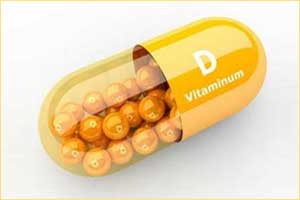- Home
- Editorial
- News
- Practice Guidelines
- Anesthesiology Guidelines
- Cancer Guidelines
- Cardiac Sciences Guidelines
- Critical Care Guidelines
- Dentistry Guidelines
- Dermatology Guidelines
- Diabetes and Endo Guidelines
- Diagnostics Guidelines
- ENT Guidelines
- Featured Practice Guidelines
- Gastroenterology Guidelines
- Geriatrics Guidelines
- Medicine Guidelines
- Nephrology Guidelines
- Neurosciences Guidelines
- Obs and Gynae Guidelines
- Ophthalmology Guidelines
- Orthopaedics Guidelines
- Paediatrics Guidelines
- Psychiatry Guidelines
- Pulmonology Guidelines
- Radiology Guidelines
- Surgery Guidelines
- Urology Guidelines
Low Vitamin D level not associated with Fatty Liver, finds a study

Low level of vitamin D is not associated with fatty liver, revealed a study published in the journal Annals of Hepatology.
The findings of the study indicated that low Vitamin D level and fatty liver were not separately associated with caloric consumption and physical activity.
The impact of vitamin D deficiency on the fatty liver has been discussed in prior studies. Many studies have demonstrated an inverse association between fatty liver and vitamin D deficiency whereas, few did not find any association between the two.
Read also: Vitamin D with estrogen may prevent metabolic syndrome in postmenopausal women
In this study, the authors tried to ascertain the link between vitamin D and its connection with fatty liver via a cross-sectional study. The authors obtained the data on Data on cardiovascular risk factors, medications, alcohol intake, smoking, diet, and physical activity. Biochemical, anthropometric, and blood pressure variables were measured. The 25-hydroxyvitamin D (25(OH)D) was quantified through chemoluminescence. The presence of FL, defined as a liver/spleen attenuation index lower than 1.0, was identified through computed axial tomography (CAT).
Read also: Type 2 diabetes increases risk of fatty liver disease, finds study
A total of 1,467 subjects (49.7% men) with an average age of 53.3 ± 9.3 years and BMI of 28.3 ± 4.0 kg/m2 were included in the study. Only 11% had optimum values of vitamin D, and 25(OH)D concentration was lower in participants with FL. Multivariate logistic regression model, adjusted for age, gender, BMI, sampling season, glucose, total cholesterol, triglycerides, HOMA-IR, hs-CRP, ALT, AST, and elevated VAT, revealed an association between FL and vitamin D (VD) insufficiency. However, the authors found no statistical significance when caloric consumption and physical activity were included in the model.
Based on the findings the authors concluded that deficient VD concentration and FL were not independently associated of caloric consumption and physical activity.
for further reference, click on the link
DOI: 10.5604/01.3001.0011.7386

Disclaimer: This site is primarily intended for healthcare professionals. Any content/information on this website does not replace the advice of medical and/or health professionals and should not be construed as medical/diagnostic advice/endorsement or prescription. Use of this site is subject to our terms of use, privacy policy, advertisement policy. © 2020 Minerva Medical Treatment Pvt Ltd